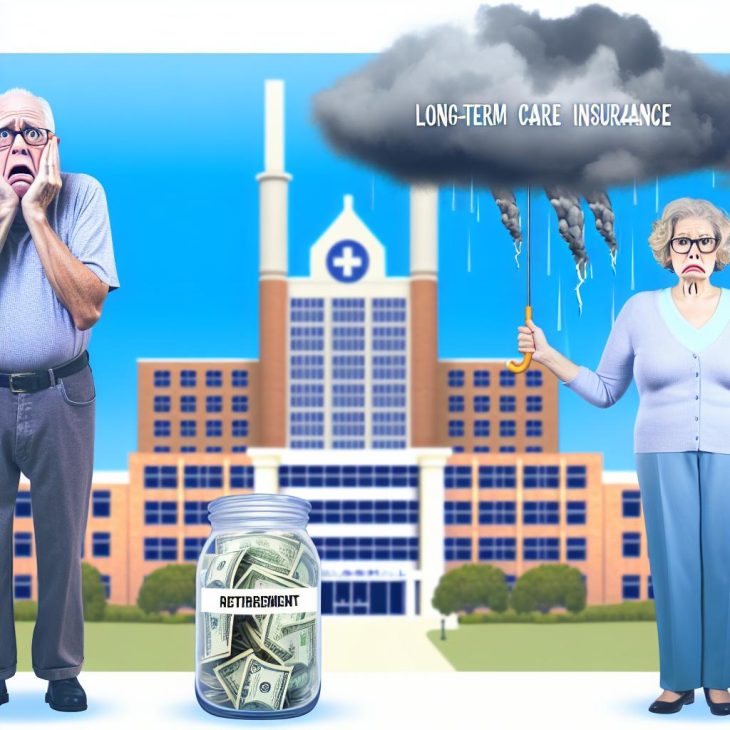
The Importance of Long-Term Care Insurance
As individuals age, the likelihood of requiring assistance with daily living activities increases, making the need for long-term care ever more pertinent. Despite its critical role in safeguarding financial well-being and providing necessary support, long-term care insurance remains an area consistently underprioritized and shrouded by misconceptions. Understanding the implications of this insurance coverage and its alternatives is vital for both individuals and their families.
Understanding Long-Term Care Insurance
Long-term care insurance is a specialized form of coverage designed to facilitate care services that an aging or disabled person might need, such as in-home care, assisted living arrangements, and services provided by nursing home facilities. These services primarily assist individuals with performing basic daily activities, often referred to as activities of daily living (ADLs), which include bathing, dressing, eating, and mobility tasks. As people age or face certain health challenges, the ability to perform these tasks without assistance may diminish, making long-term care services crucial for maintaining quality of life and independence.
Adequate coverage through long-term care insurance helps manage the financial aspect of these services. Unfortunately, without this coverage, the monetary burden can be significant enough to overwhelm personal savings and income. This insurance effectively acts as a financial buffer that protects individuals from the high costs associated with prolonged care that Medicare or standard health insurance policies might not cover.
Potential Financial Burdens
The financial implications of not having long-term care insurance are profound. As illuminated by the Genworth Cost of Care Survey, the national median cost of a private room in a nursing home is currently about $9,000 monthly, amounting to an excess of $100,000 annually. Such expenses are staggering and can rapidly exhaust personal retirement savings and available financial assets.
These high expenses extend beyond nursing home facilities. In-home care services or assisted living facilities also come with significant costs that individuals must consider. Without insurance coverage, individuals risk having to solely rely on personal savings, which might not suffice for prolonged care durations. This situation underscores the critical importance of early planning and making informed decisions about long-term care insurance.
Impact on Family Members
Families face considerable challenges when long-term care insurance is not in place. The absence of insurance coverage invariably shifts the financial responsibility onto family members, primarily adult children, who may already be managing their own financial commitments. Such a shift can result in a considerable financial strain, as these family members may be compelled to either reduce their retirement savings or incur debt to support their aging relatives.
Moreover, this financial burden can affect multiple generations. When parents require assistance, the financial strain can trickle down to affect the livelihood and economic stability of the younger members, altering family dynamics and potentially hindering their financial futures. Hence, long-term care insurance can provide peace of mind and financial stability for both individuals requiring care and their family members.
Alternatives to Consider
For those opting against or unable to secure traditional long-term care insurance, exploring alternative strategies becomes essential. One viable approach is investing in hybrid life insurance policies that offer long-term care benefits. These policies combine life insurance coverage with the flexibility to utilize a portion of the death benefit for long-term care needs if required.
Another alternative involves utilizing health savings accounts (HSAs). These accounts allow for tax-free savings that can be applied towards qualified long-term care expenses. Setting up a dedicated long-term care fund is also a method some individuals may prefer, where savings are earmarked specifically for future care needs. Each of these strategies provides an opportunity to mitigate the potential financial burden associated with long-term care services.
Healthcare Policy Dynamics: Government programs like Medicaid can offer some degree of financial assistance for long-term care, yet the constraints and stipulations associated with these programs must be diligently heeded. Medicaid requires individuals to meet strict income and asset eligibility criteria, often necessitating a considerable spend-down of assets before one can qualify for benefits. Therefore, relying solely on Medicaid for long-term care coverage can prove risky and may not align with one’s overall financial strategy.
Conclusion
The necessity of planning for potential long-term care needs is indisputable. Without such planning, individuals risk facing severe financial consequences, potentially compromising their financial stability and the future livelihood of their families. Long-term care insurance, or well-considered alternative options, provides a safeguard against such economic upheaval. These measures ensure that personal finances are preserved and familial responsibilities are alleviated.
For more comprehensive information and guidance on long-term care solutions, individuals are encouraged to explore additional resources such as longtermcare.acl.gov, which offers insights and assistance in navigating the complexities of long-term care planning. By proactively addressing these challenges, individuals and families can better secure their financial futures while ensuring necessary care is accessible when it is most needed.
This article was last updated on: July 8, 2025
